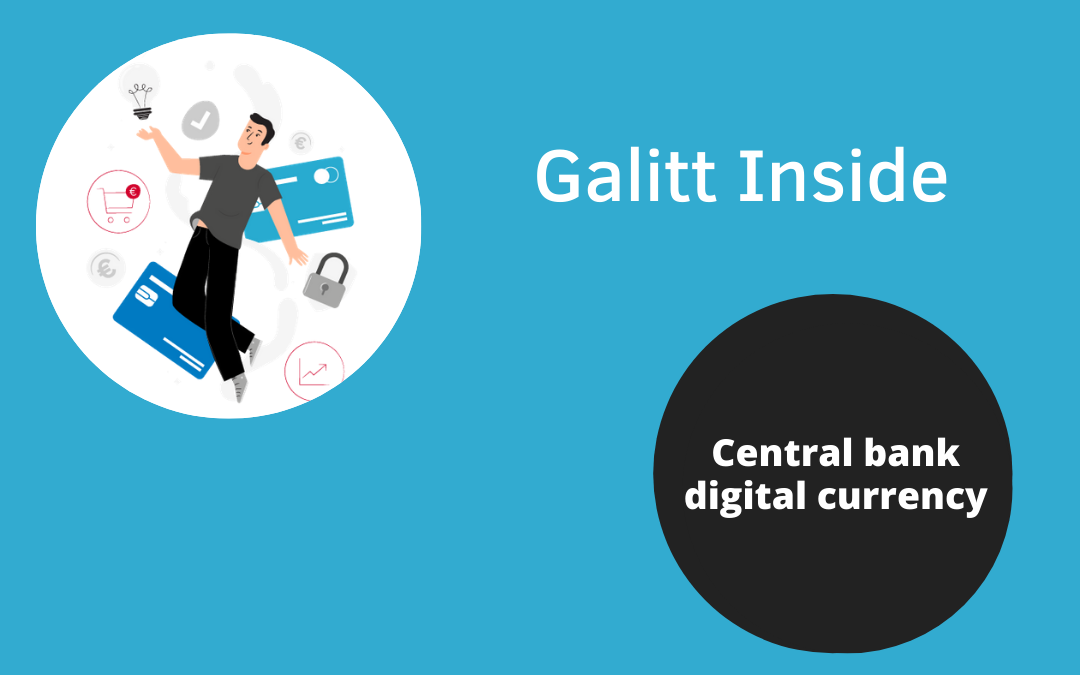CBDC, the central banks are going digital

In 2008, the first crypto-currency made its appearance and aimed to provide an alternative independent of the classic banking system, shaken by the financial crisis of that same year. Bitcoin is launched and will be a model for future crypto-currencies, which will multiply from then on, with varying degrees of success. This still unstable model, characterized by its high volatility, will nevertheless push Central Banks around the world to study the possibility of a digital central bank and digital currency.
Digital coins in the age of time
It is partly from this observation that the world’s major central banks have understood the need to adapt to the evolution of the sector in order to rethink the digitization of traditional monetary systems. The emergence and attractiveness of all these innovative means of payment has prompted them to accelerate their thinking on the subject. It’s now very real: Central Banks are setting up what are called CBDCs (Central Bank Digital Currencies), not wanting to be overtaken by the growing competition from private companies, which are themselves beginning to offer this type of digital currency. This is the case of Facebook with Diem (formerly Libra) whose crypto-money is planned to be launched at the beginning of this year. Facebook undoubtedly served as a gas pedal for the emergence of CBDCs, given the risk of destabilization of the monetary system that the authorities perceived in this alternative project, on the part of an actor of such magnitude. This danger in terms of stability had been noted in particular by the G7, which last October published a forum strongly opposing the authorization of projects such as Libra in the absence of an appropriate regulatory framework.
One of the first CBDCs to be effectively implemented was the Digital Yuan in October 2020. Tested since last April in 4 cities in China, it was launched in Shenzhen. 10 million “digital” Yuan (50,000 200 Yuan vouchers) were paid into the electronic wallets (mobile wallets) of the city’s inhabitants, with the aim of testing the solution.
The European Central Bank has also accelerated its reflection in order to quickly study the opportunity to propose an CBDC. The “digital euro” should therefore enter the test phase in the coming months: the ECB has launched a public consultation to measure the expectations around this digital euro. These full-scale tests will make it possible to assess the risks and benefits of implementing a digital currency. Indeed, many doubts remain about the effectiveness of this new system, especially in terms of the security of the currency. The blockchain principle applied in cryptocurrency has its advantages as well as its disadvantages and some start-ups offering cryptocurrency have been victims of large-scale computer attacks. The objective for the Central Banks will be to avoid reproducing these errors, the stakes being all the more important on their scale than on that of a company.
The different applications of CBDCs
Reflections are therefore focused on the creation of two distinct types of CBDC: one called “wholesale” and the other “retail”.
The role of the “wholesale” CBDC will be to facilitate interbank transactions, in particular by creating a blockchain listing all the exchanges concerned in a digital way. This information would be shared transparently by all financial players, in order to reduce the interbank payment system breakdowns that have set the pace in 2020.

Image source : Code Theorem agency



